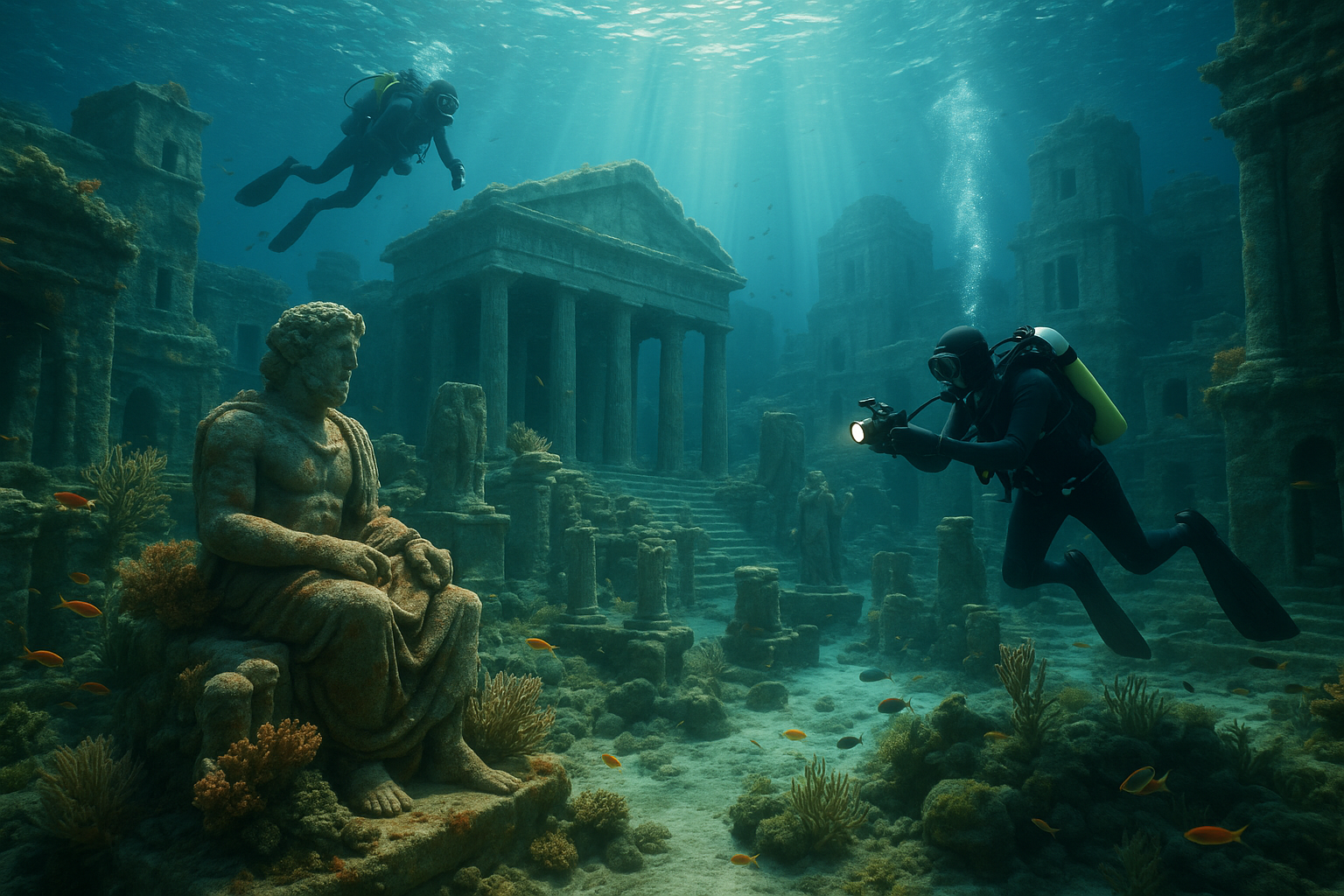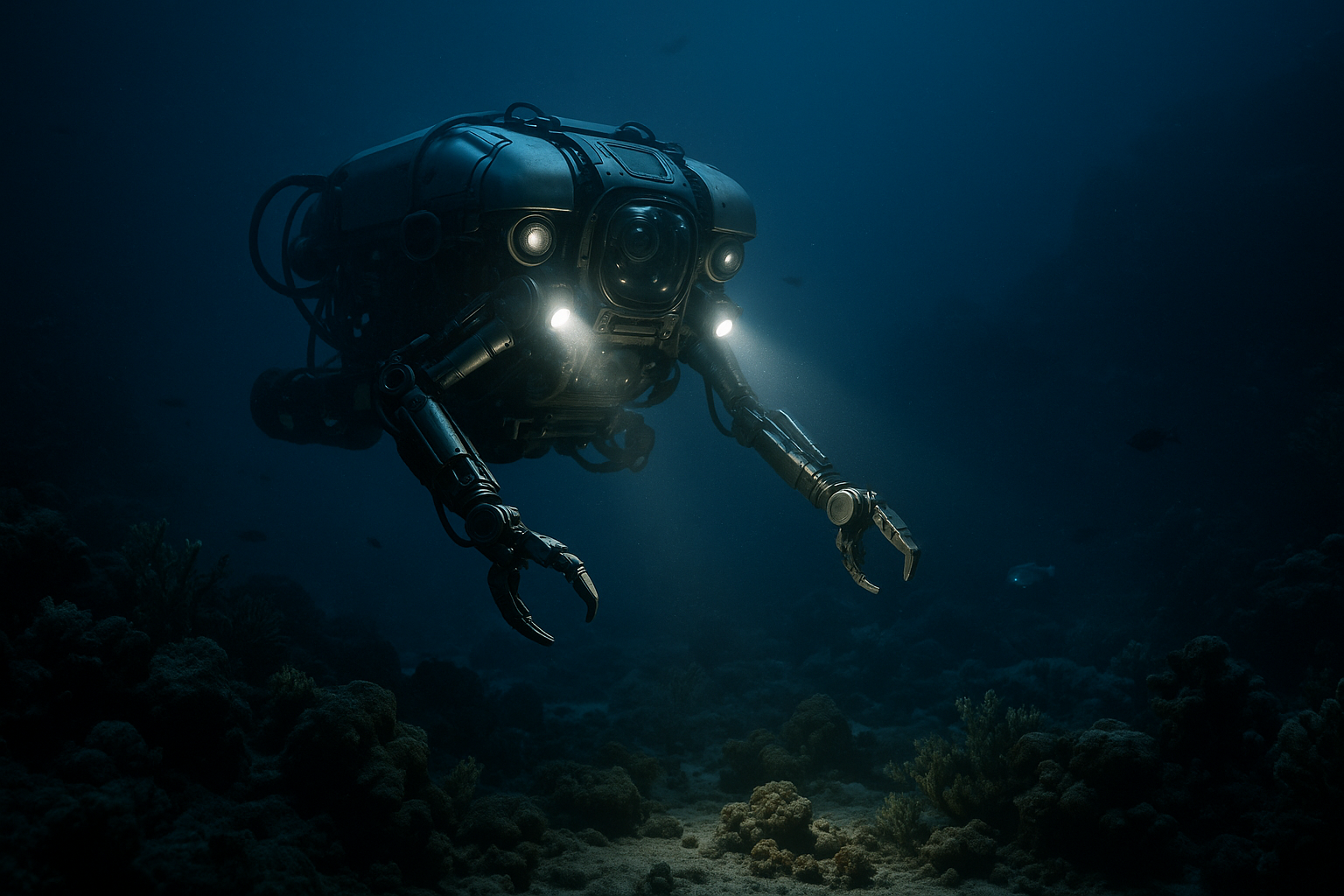Imagine a world where ancient civilizations thrived beneath the waves, their architectural marvels and urban landscapes hidden from sight, yet teeming with stories waiting to be told. 🏛️ These are the lost cities of the sea, marine metropolises that once bustled with life and ingenuity, now resting silently on the ocean floor. As we embark on a journey to uncover these submerged wonders, we delve into a realm where history, archaeology, and marine science intertwine to reveal secrets long buried by the tides.
The ocean, covering more than 70% of our planet, has always been a source of mystery and fascination. While space exploration often captures our imagination, the depths of the sea hold countless enigmas yet to be fully understood. Among these are the remnants of ancient cities, once vibrant centers of trade, culture, and innovation, now submerged due to natural disasters, rising sea levels, or the relentless march of time. 🌊
In this exploration, we will shine a light on the fascinating world of underwater archaeology, a field that combines cutting-edge technology with historical inquiry to piece together the stories of these sunken cities. From the famed city of Atlantis, often regarded as a myth, to real-life counterparts like Pavlopetri in Greece and Dwarka in India, we will journey across continents and centuries. These submerged sites offer a unique window into the past, revealing how ancient peoples adapted to their environments, engaged in commerce, and expressed their artistic and architectural prowess.
One of the most intriguing aspects of these underwater cities is their urban planning. The sophisticated layouts of these marine metropolises challenge our assumptions about the capabilities of ancient civilizations. Streets, buildings, and public spaces were designed with an understanding of environmental and social dynamics that continues to inspire modern urban planners. As we uncover these underwater tapestries, we also confront questions about sustainability, resilience, and the interplay between human societies and their natural surroundings.
The journey to uncover these lost cities is not just an archaeological adventure; it is also a technological one. Advances in sonar mapping, remotely operated vehicles (ROVs), and underwater drones have revolutionized our ability to explore the ocean depths. These tools allow researchers to capture high-resolution images and create detailed maps of submerged sites, bringing these forgotten worlds back to life in stunning detail. 📡
Yet, technology alone cannot decode the mysteries of these sunken cities. It is the human element—our curiosity, our drive to understand, and our ability to interpret the evidence—that ultimately breathes life into these ancient stories. As we navigate through this article, you will encounter the passionate researchers and explorers dedicated to uncovering the secrets of the deep. Their insights not only illuminate the past but also offer valuable lessons for the present and future.
The exploration of underwater cities also raises important questions about preservation and conservation. As we uncover these ancient sites, we must also grapple with the ethical implications of our discoveries. How do we balance the thirst for knowledge with the need to protect these fragile ecosystems? The responsibility of preserving our cultural heritage extends beneath the waves, requiring thoughtful consideration and international cooperation.
Throughout this article, we will dive deep into the stories of specific cities, exploring their rise and fall, and the unique characteristics that define them. From the intricate harbors of Thonis-Heracleion in Egypt to the spiritual significance of the temples of Mahabalipuram in India, each site offers a unique narrative thread, weaving together the diverse tapestry of human history.
So, prepare to plunge into the depths and discover the lost cities of the sea. As we unravel the mysteries of these ancient marine metropolises, we will not only uncover the secrets of urban planning beneath the waves but also reflect on the enduring human spirit that connects us to our ancestors. This journey promises to be as enlightening as it is captivating, offering a glimpse into a world where the boundaries of land and sea blur, and history whispers from the depths. 🌍
Stay with us as we chart a course through time and space, where ancient civilizations await discovery just beneath the ocean’s surface. The stories of these lost cities are not just relics of the past; they are lessons for the future, urging us to look beyond the horizon and explore the unknown with wonder and respect.

Conclusion: Rediscovering the Depths of History 🌊
As we journeyed through the ancient marine metropolises, we unraveled the profound mysteries of the sunken cities beneath the waves. These underwater urban wonders, once bustling with life and culture, offer invaluable insights into historical urban planning and the resilience of human civilization. By examining these submerged cities, we not only gain a deeper understanding of past societies but also learn crucial lessons about sustainability and adaptation in the face of environmental challenges.
Our exploration highlighted several key points:
- The architectural ingenuity of ancient civilizations, as seen in their complex urban designs and infrastructure.
- The impact of natural disasters and climate change on the submersion of these once-thriving cities.
- The significance of archaeological and technological advancements in uncovering and preserving these underwater sites.
- The cultural and historical value these sunken cities hold, reminding us of the intricate tapestry of human history.
The discovery and study of these lost cities not only satisfy our curiosity but also inspire contemporary urban planners and conservationists. The lessons learned from these submerged metropolises could inform future city planning and climate resilience strategies, highlighting the importance of harmonizing human development with nature.
As we conclude this deep dive into the past, let us carry forward the stories and secrets unearthed from the ocean’s depths. Share your thoughts and engage with others on this fascinating topic by leaving a comment below or sharing this article with friends and colleagues. 🌐 Together, we can continue to explore and preserve the rich history hidden beneath the waves, ensuring that these underwater legacies are not forgotten.
For further reading and to delve deeper into this captivating subject, explore these resources:
- Archaeology Magazine – A reputable source for the latest archaeological discoveries and research.
- National Geographic – History – Offering insightful articles on historical and archaeological topics.
Thank you for embarking on this journey with us. May the mysteries of the deep continue to inspire your quest for knowledge and adventure! 🌊🔍
This conclusion encourages engagement, highlights the main points discussed, and provides additional resources for readers interested in exploring the topic further.
Toni Santos is a visual storyteller and archival artist whose work dives deep into the submerged narratives of underwater archaeology. Through a lens tuned to forgotten depths, Toni explores the silent poetry of lost worlds beneath the waves — where history sleeps in salt and sediment.
Guided by a fascination with sunken relics, ancient ports, and shipwrecked civilizations, Toni’s creative journey flows through coral-covered amphorae, eroded coins, and barnacle-encrusted artifacts. Each piece he creates or curates is a visual meditation on the passage of time — a dialogue between what is buried and what still speaks.
Blending design, storytelling, and historical interpretation, Toni brings to the surface the aesthetics of maritime memory. His work captures the textures of decay and preservation, revealing beauty in rust, ruin, and ruin’s resilience. Through his artistry, he reanimates the traces of vanished cultures that now rest on ocean floors, lost to maps but not to meaning.
As the voice behind Vizovex, Toni shares curated visuals, thoughtful essays, and reconstructed impressions of archaeological findings beneath the sea. He invites others to see underwater ruins not as remnants, but as thresholds to wonder — where history is softened by water, yet sharpened by myth.
His work is a tribute to:
The mystery of civilizations claimed by the sea
The haunting elegance of artifacts lost to time
The silent dialogue between water, memory, and stone
Whether you’re drawn to ancient maritime empires, forgotten coastal rituals, or the melancholic beauty of sunken ships, Toni welcomes you to descend into a space where the past is submerged but never silenced — one relic, one current, one discovery at a time.




